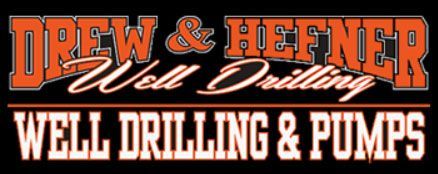Frequently Asked Questions About Water Wells & Pump Systems
1. Are you licensed, insured, and bonded?
In California, well drillers are required to be licensed and display a 4x6 inch decal on both sides of their drilling equipment or service trucks. Reputable well drillers also carry insurance. Make sure to ask for proof of both before any work begins.
2. Cost
Although the cost of digging a new well will vary depending on factors such as soil type, depth, and available water supplies, there are some fixed costs associated with drilling that are unavoidable. These include permit fees if local authorities require them, the actual drill rig itself, and any modifications or accessories it needs to complete the job. Diesel fuel for powering equipment used on site, staffing charges for the number of men required to complete the work, and other expenses can also factor into the total price. It is advisable to get a quote for the complete cost of the project before work begins.
3. Is there a warranty?
Most, if not all, parts have a 1-year warranty.
4. Why do you have to have a water meter?
The county will not give you a permit to drill a new well without first getting a permit for a meter.
Getting a meter permit is part of the county's requirements.
5. What type of well should I install?
That answer is not so simple. There are many factors involved to answer that question.
What is the water table in the area you live?
Where are you located? What county?
What is the well for? Your home only? Are you on property? If so, how many acres do you have, and are you growing anything?
How many gallons per minute are you needing?
Are we installing a larger water storage tank system or a standard captive air tank?
Once we answer these questions, then we can land on what type of water well and pump you will require to support your needs.
The most common well and pump system we do 99 percent of the time for single-family homes is 3–5 bedrooms, 2–3 baths on ¼–2 acres (Madera/Fresno/Merced Counties). 5"–6" 600' well with the water table being around 350'–380'. We like to use the #3 Franklin Pump and Motor at 441'–481' with 1¾ galvanized drop pipe (80 pieces). This allows the pump to sit around 100' in the water when the water table falls to ~380'. This is an example only of this county. There are other types of well systems throughout California that have a higher water table, and with that, my well depth and pump setting would change. My example is the worst-case scenario.
6. Can I get enough water from my well?
There are many factors involved to answer that question.
- What area do you live in?
- How was your old well?
- How deep was your old well?
- How deep of a well are you drilling?
- Are you surrounded by farmland with huge wells?
- What are the average depths of the wells in your area, and what are they producing (how many GPM)?w was your old well?
Once we answer these questions, then we can determine what we need to do so when you drill a new well, we have a higher chance of success. Even if your well is not gushing water, that does not always translate to a bad well. With that scenario, we can add large storage tanks with a booster pump setup. This way, whether the tank is near the head you need in storage, you're not depending on the well at the point of use. Rather, the well fills up the storage tanks and pulls up from the tanks, and then the well replenishes the tanks. In return, the pump is working smarter, not harder.
7. What do I have to do to prepare the lot for my well?
Drew and Hefner Wells and Pumps will come out and stake the future well location with you, the homeowner. Once this is decided, we will make sure there is a clear path in and out so that our drill rig can make its way to the new well location along with our other equipment needed to do the job. Most of the time we, Drew and Hefner, work with the homeowner and assist them in getting their lot mowed or relocated at no expense to them. Our job is to make your life easier, not harder. We require a 50’ x 50’ square to do our job. We will be pumping drilling mud and water in a location decided on with the homeowner.
8. Where can I drill the well?
State and local laws and guidelines will largely determine where your well should be drilled. Well, regulations stipulate certain setbacks from roads, property lines, wetlands, and buildings. It makes sense to have the well relatively close to your home, but if it needs to be placed a sizable distance from the house, you will need to talk to the well driller about making sure your well pump is large enough to keep water flowing over greater distances.
Please call Ron Drew (559) 645-2483 or (831) 229–5503 to discuss any questions further.







